If ratified and implemented, the just-agreed Trans-Pacific Partnership will have a monumental impact on trade and capital flows along the Pacific Rim, with massive benefits for all 12 countries involved. Unfortunately, the highly charged politics of trade has left the TPP's future uncertain.
TOKYO – This month, 12 countries on both sides of the Pacific finalized the historic Trans-Pacific Partnership trade agreement. The scope of the TPP is vast. If ratified and implemented, it will have a monumental impact on trade and capital flows along the Pacific Rim. Indeed, it will contribute to the ongoing transformation of the international order. Unfortunately, whether this will happen remains uncertain.
The economics of trade and finance that form the TPP’s foundations are rather simple, and have been known since the British political economist David Ricardo described them in the nineteenth century. By enabling countries to make the most of their comparative advantages, the liberalization of trade and investment provides net economic benefits, although it may hurt particular groups that previously benefitted from tariff protections.
But the politics of trade liberalization – that is, the way in which countries proceed to accept free trade – is much more complex, largely because of those particular groups it hurts. For them, the overall economic benefits of trade liberalization matter little, if their own narrow interests are being undercut. Even if these groups are relatively small, the discipline and unity with which they fight trade liberalization can amplify their political influence considerably – especially if a powerful political figure takes up their cause.
That is what is now happening in the United States. Former Secretary of State Hillary Clinton undoubtedly understands the economics of the TPP, which she once called the “gold standard” in trade agreements. But now that she is on the presidential campaign trail, she has changed her tune. The reason is apparent: she has judged that she cannot afford to lose the support of American trade unions such as the United Automobile Workers, whose members fear a reduction in tariffs on car and trucks.
This shift may make sense politically, but it is abysmal economics. In reality, the TPP is a great bargain for the US. The concessions it contains on manufactured products like automobiles are much smaller than those on, say, agricultural products, which will involve profound sacrifices from other TPP countries, such as Japan. After all, existing tariff levels on manufactured goods are already much lower than those on agriculture or dairy products.
In short, with the TPP, the US is catching a big fish with small bait. But the increased trade and investment flows brought about by the TPP’s ratification and implementation will benefit even the countries that must make larger sacrifices.
Japan, for example, will find that the TPP enhances “Abenomics,” the three-pronged economic-revitalization strategy introduced by Prime Minister Shinzo Abe in 2012. The third component, or “arrow,” of Abenomics – structural reforms – aims to restore growth by raising productivity. But increasing efficiency in a wide variety of sectors, as Japan must do, can be a long, difficult, and piecemeal process, as it involves the upgrading of virtually every technology and process.
By connecting Japan’s industries more closely with those of other countries, the TPP can accelerate this process considerably. Moreover, it can spur faster administrative reform. Simply put, the TPP will amount to a powerful tailwind for Abenomics.
It should be noted that liberalization does involve some economic tradeoffs, as protection can, in some areas, serve an important purpose. As the economist Jagdish Bhagwati points out, maintaining increased protections for, say, intellectual property may encourage research and innovation. At the same time, however, excessive IP protections can deter the proliferation of existing knowledge and the development of high-tech products. In the case of pharmaceuticals, for example, this tradeoff can be difficult to navigate. Nonetheless, Bhagwati maintains, when it comes to overall trade and capital movements, freer is better.
Given all of this, one hopes that opposition from political figures like Clinton amounts to naught – an entirely plausible outcome, in Clinton’s case, because the TPP should be enacted before the presidential election in November 2016. This would, to some extent, be in line with the TPP negotiation process, in which the political challenges associated with trade liberalization have been handled remarkably well. It seems that involving so many sectors in so many countries actually made it easier to overcome resistance, as it diffused the opposition and prevented any single specific interest from getting the upper hand.
Of course, that does not mean that the negotiations were easy. On the contrary, trade representatives had to display impressive endurance and patience – for more than five years, for some countries. To enable progress, confidentiality was vital (despite US negotiators’ claims that the discussions were wholly transparent).
Failure to ratify the TPP in all 12 countries would be a major disappointment, not just because of the tremendous amount of effort that has gone into it, but also – and more important – because of the vast economic benefits it would bring to all countries involved. In Japan, as long as most of the ruling Liberal Democratic Party stands firm in supporting the TPP, it should be ratified. But the situation in the US Congress is more dubious. One hopes that America’s leaders do not miss a golden opportunity to give US businesses – and thus the US economy – a significant boost.




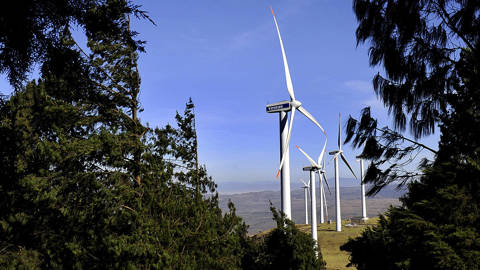
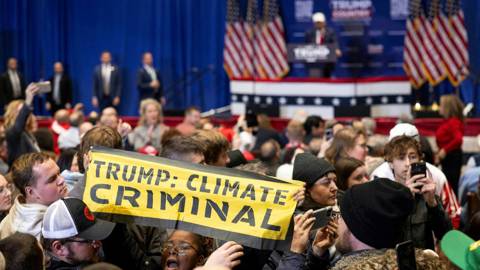
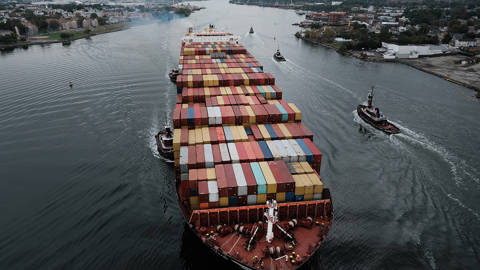
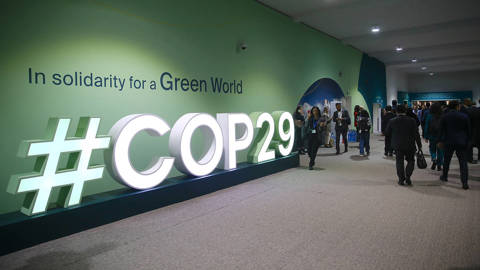
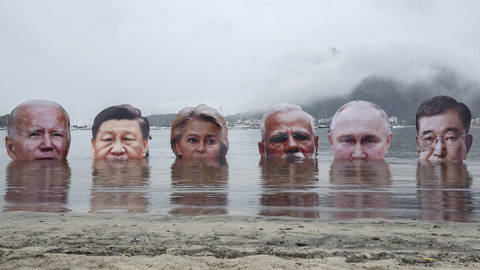


TOKYO – This month, 12 countries on both sides of the Pacific finalized the historic Trans-Pacific Partnership trade agreement. The scope of the TPP is vast. If ratified and implemented, it will have a monumental impact on trade and capital flows along the Pacific Rim. Indeed, it will contribute to the ongoing transformation of the international order. Unfortunately, whether this will happen remains uncertain.
The economics of trade and finance that form the TPP’s foundations are rather simple, and have been known since the British political economist David Ricardo described them in the nineteenth century. By enabling countries to make the most of their comparative advantages, the liberalization of trade and investment provides net economic benefits, although it may hurt particular groups that previously benefitted from tariff protections.
But the politics of trade liberalization – that is, the way in which countries proceed to accept free trade – is much more complex, largely because of those particular groups it hurts. For them, the overall economic benefits of trade liberalization matter little, if their own narrow interests are being undercut. Even if these groups are relatively small, the discipline and unity with which they fight trade liberalization can amplify their political influence considerably – especially if a powerful political figure takes up their cause.
That is what is now happening in the United States. Former Secretary of State Hillary Clinton undoubtedly understands the economics of the TPP, which she once called the “gold standard” in trade agreements. But now that she is on the presidential campaign trail, she has changed her tune. The reason is apparent: she has judged that she cannot afford to lose the support of American trade unions such as the United Automobile Workers, whose members fear a reduction in tariffs on car and trucks.
This shift may make sense politically, but it is abysmal economics. In reality, the TPP is a great bargain for the US. The concessions it contains on manufactured products like automobiles are much smaller than those on, say, agricultural products, which will involve profound sacrifices from other TPP countries, such as Japan. After all, existing tariff levels on manufactured goods are already much lower than those on agriculture or dairy products.
In short, with the TPP, the US is catching a big fish with small bait. But the increased trade and investment flows brought about by the TPP’s ratification and implementation will benefit even the countries that must make larger sacrifices.
BLACK FRIDAY SALE: Subscribe for as little as $34.99
Subscribe now to gain access to insights and analyses from the world’s leading thinkers – starting at just $34.99 for your first year.
Subscribe Now
Japan, for example, will find that the TPP enhances “Abenomics,” the three-pronged economic-revitalization strategy introduced by Prime Minister Shinzo Abe in 2012. The third component, or “arrow,” of Abenomics – structural reforms – aims to restore growth by raising productivity. But increasing efficiency in a wide variety of sectors, as Japan must do, can be a long, difficult, and piecemeal process, as it involves the upgrading of virtually every technology and process.
By connecting Japan’s industries more closely with those of other countries, the TPP can accelerate this process considerably. Moreover, it can spur faster administrative reform. Simply put, the TPP will amount to a powerful tailwind for Abenomics.
It should be noted that liberalization does involve some economic tradeoffs, as protection can, in some areas, serve an important purpose. As the economist Jagdish Bhagwati points out, maintaining increased protections for, say, intellectual property may encourage research and innovation. At the same time, however, excessive IP protections can deter the proliferation of existing knowledge and the development of high-tech products. In the case of pharmaceuticals, for example, this tradeoff can be difficult to navigate. Nonetheless, Bhagwati maintains, when it comes to overall trade and capital movements, freer is better.
Given all of this, one hopes that opposition from political figures like Clinton amounts to naught – an entirely plausible outcome, in Clinton’s case, because the TPP should be enacted before the presidential election in November 2016. This would, to some extent, be in line with the TPP negotiation process, in which the political challenges associated with trade liberalization have been handled remarkably well. It seems that involving so many sectors in so many countries actually made it easier to overcome resistance, as it diffused the opposition and prevented any single specific interest from getting the upper hand.
Of course, that does not mean that the negotiations were easy. On the contrary, trade representatives had to display impressive endurance and patience – for more than five years, for some countries. To enable progress, confidentiality was vital (despite US negotiators’ claims that the discussions were wholly transparent).
Failure to ratify the TPP in all 12 countries would be a major disappointment, not just because of the tremendous amount of effort that has gone into it, but also – and more important – because of the vast economic benefits it would bring to all countries involved. In Japan, as long as most of the ruling Liberal Democratic Party stands firm in supporting the TPP, it should be ratified. But the situation in the US Congress is more dubious. One hopes that America’s leaders do not miss a golden opportunity to give US businesses – and thus the US economy – a significant boost.